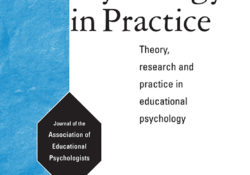
tandfonline.com har udgivet en rapport under søgningen “Teacher Education Mathematics”: Abstract Abstract Despite evidence for the involvement of working memory in mathematics attainment, the understanding of its components relationship to individual areas of mathematics is somewhat restricted. This study aims to better understand this relationship. Two-hundred and fourteen year 3 children in the UK were administered tests of verbal and visuospatial working memory, followed by a standardised mathematics test. Confirmatory factor analyses and variance partitioning were then performed on the data to identify the unique variance accounted for by verbal and visuospatial working memory measures for each component of mathematics assessed. Results revealed contrasting patterns between components, with those typically visual components demonstrating a larger proportion of unique variance explained by visuospatial measures. This pattern reveals a level of specificity… Continue Reading →
Like this:
Like Loading...
tandfonline.com har udgivet en rapport under søgningen “Teacher Education Mathematics”: ABSTRACT ABSTRACT The demands on mathematical problem-solving have increased in almost all school systems internationally and may constitute a barrier for children with special educational needs (SEN). This study explored the role of fluid reasoning (FR), working memory (WM) and complex executive function of planning (EF) in children (N = 62) referred for assessment of SEN, and specifically of risk for mathematical difficulties (MD). Performances on FR, WM and complex EF of planning were used to predict risk for MD. Results showed that planning ability predicted children at risk for MD, beyond FR or WM ability, when comparing with children not at risk for MD. It was concluded that assessing the complex EF of planning in addition to FR and WM ability is… Continue Reading →
Like this:
Like Loading...
tandfonline.com har udgivet en rapport under søgningen “Teacher Education Mathematics”: ABSTRACT ABSTRACT Empirical evidence suggests a phonological loop deficit associated with Down syndrome. A trisomy 21 may be associated with a narrowing of visual attention to fewer than four objects at a time too. In a study with computer tachistoscopy, the hypothesis was confirmed in all 194 persons with trisomy 21. The subitising limit of persons with trisomy 21 thus has a value that lies between the value of neurotypical persons and persons with simultanagnosia. A fitting term would therefore be ‘simultandysgnosia’. Consideration of this dysgnosia could prove to be a key to learning disabilities in mathematics in particular and learning disabilities in general. Diagnostic and learning methods should consider this limitation of the attention span not only in verbal… Continue Reading →
Like this:
Like Loading...
tandfonline.com har udgivet en rapport under søgningen “Teacher Education Mathematics”: ABSTRACT ABSTRACT An increasing number of high-stakes mathematics standardised tests around the world place an emphasis on using mathematical word problems to assess students’ mathematical understanding. Not only do these assessments require children to think mathematically, but making sense of these tests’ mathematical word problems also brings children’s language ability, reading comprehension and working memory into play. The nature of these test items places a great deal of cognitive demand on all mathematics learners, but particularly on children completing the assessments in a second language that is still developing. This paper reports findings from an exploratory study on the contribution of language to mathematics achievement among 35 children with English as an Additional Language (EAL) and 31 children with English… Continue Reading →
Like this:
Like Loading...



